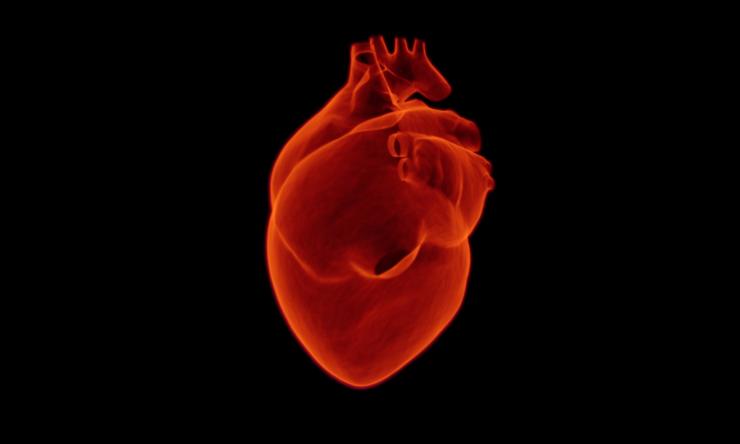Decreased levels of a protein kinase leads to atrial fibrillation
With more than 33.5 million people worldwide being affected by atrial fibrillation, researchers are focused on trying to uncover exactly what causes this type of arrhythmia and what might be the best therapeutic target to prevent this potentially deadly disorder.
Past studies have recognized enhanced diastolic calcium release via a certain type of calcium channel known as ryanodine receptors (RyR2) as playing a role in atrial fibrillation, but what triggers this enhanced release has not been fully explained. That is until recently, when researchers at Baylor College of Medicine’s Cardiovascular Research Institute identified in patients that reduced levels of striated muscle preferentially expressed protein kinase (SPEG) are responsible for the hyperactive state of RyR2 in atrial fibrillation. Their findings are published in the current edition of Circulation.
A protein kinase is an enzyme that modifies other proteins -- in this way, SPEG is a novel regulator of RyR2 phosphorylation.
“When SPEG is functioning properly, it reduces RyR2 activity. So when we find reduced levels of SPEG, RyR2 is more hyperactive, and we see this abnormal activity in atrial fibrillation,” said Dr. Xander Wehrens, professor and director of the Cardiovascular Research Institute at Baylor. “This is one of the first examples of a kinase that has an inhibiting effect on calcium channels in the heart.”
Researchers first noted that patients with early state atrial fibrillation were found to have reduced levels of SPEG. To look further into this finding, they used a new atrial-specific gene therapy vector to selectively downregulate SPEG levels in mouse models and found the mouse models to have an increased susceptibility to atrial fibrillation.
Atrial fibrillation can progress from early-stage or paroxysmal AFib, meaning it comes and goes, to persistent AFib, which lasts until it is treated with medication or surgery, to persistent, long-standing AFib that doesn’t respond to treatments. It can lead to stroke, heart failure and death. Numerous factors can promote the development of AFib, including genetic variants, extracardiac risk factors such as aging, obesity or alcohol abuse, and cardiac remodeling.
“The implications of our work are that modulating SPEG activity might represent a very specific target for the treatment and possibly prevention of atrial fibrillation,” said Hannah Campbell, M.D./Ph.D. student and first author on the study. “The next step is to study this process in human tissue and to test whether enhancing SPEG activity could cure atrial fibrillation in animal models.”
Others who took part in the research include Drs. Ann P. Quick, Issam Abu-Taha, David Y. Chiang, Carlos F. Kramm, Tarah A. Word, Sören Brandenburg, Mohit Hulsurkar, Katherina M. Alsina, Hui-Bin Liu, Brian Martin, Satadru K. Lahiri, Eleonora Corradini, Markus Kamler, Albert J.R. Heck, Stephan E. Lehnart, Dobromir Dobrev as well as researchers Brian Martin, Dennis Uhlenkamp and Oliver M. Moore. Affiliations include Baylor College of Medicine, University Duisburg-Essen, Essen, Germany, Brigham and Women’s Hospital, Harvard Medical School, University Medical Center Göttingen, Göttingen, Germany, Harbin Medical University, Harbin, China, and Utrecht University, Utrecht, The Netherlands. For full affiliate details see Circulation publication.
Funding is from the American Heart Association predoctoral fellowship 17CPRE33660059, and National Institutes of Health F30 fellowship HL140782. AQ was funded by AHA predoctoral fellowship 14PRE20490083, and NIH T32 training grant HL007676. TAW was funded by NIH T32 training grant HL139430. XW was funded through NIH grants HL089598, HL091947, HL117641, and HL147108. This work was performed during MH’s tenure as “The Kenneth M. Rosen Fellowship in Cardiac Pacing and Electrophysiology” Fellow of the Heart Rhythm Society supported by an unrestricted educational grant from Medtronic. BM was funded by NIH T32 training grant HL007676. SKL was funded through AHA postdoctoral fellowship 18POST34080154. SEL was funded by Deutsche Forschungsgemeinschaft through SFB 1002-S02, SFB 1190-P03, and IRTG-RP2. DD was funded by NIH grants R01-HL131517, R01-HL136389, and R01-HL089598 and the German Research Foundation (DFG) grant Do 769/4-1.











